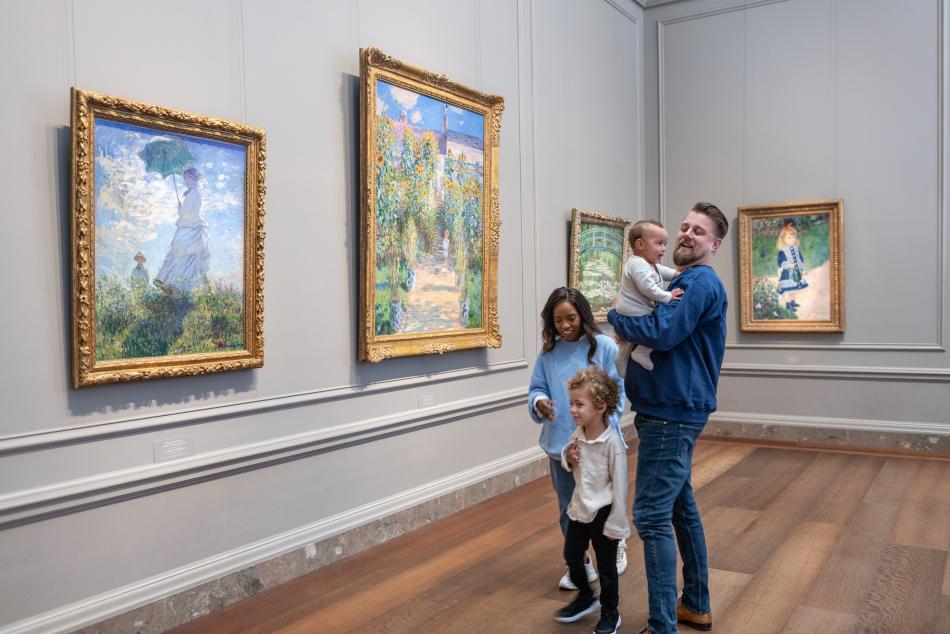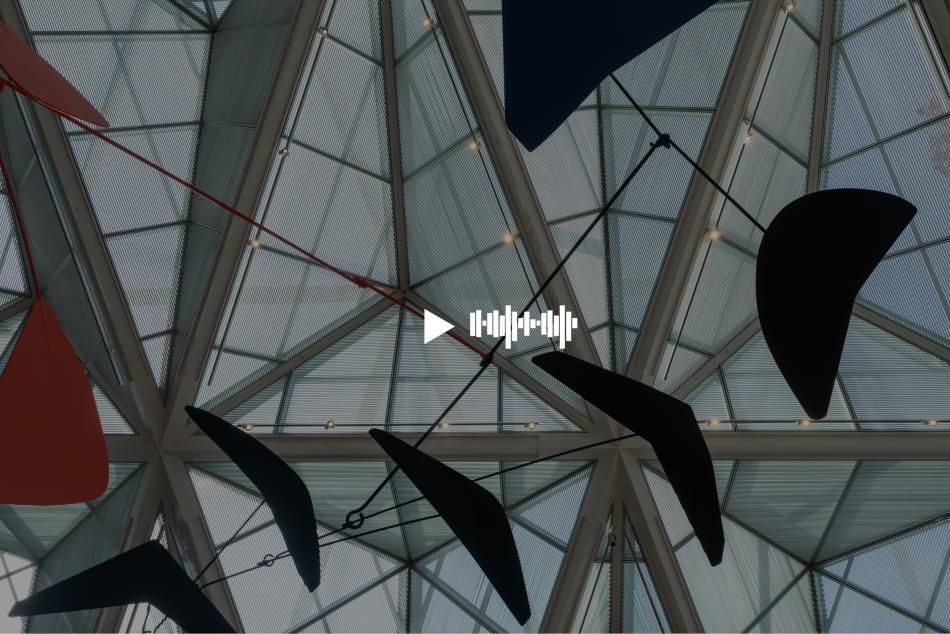NARRATOR:
This painting made in the 1430s invites us to witness an extraordinary moment in Christianity, as the Angel Gabriel delivers Mary a message from God, that she will bear his son, Jesus. The Netherlandish artist Jan van Eyck’s way of telling the story has a lot in common with theater design. For a start, look how he positioned the figures.
ANNA LOUIZOS:
It's almost like they're facing the audience, in a way.
My name is Anna Louizos. I'm a set designer. Some of my notable Broadway shows have been In the Heights, Avenue Q, and School of Rock.
The techniques that van Eyck seems to be using in this painting are very similar to what set designers would do - you create layers to create a sense of depth, and to ground these characters in a space that seems real.
NARRATOR:
The Angel and Mary are shown within a detailed church setting with dramatic lighting streaming through the windows.
ANNA LOUIZOS:
They're surrounded by elements - props - that you would have onstage.
NARRATOR:
These include a dove representing the Holy Spirit and white lilies symbolizing Mary’s purity. Her heavenly blue robe – another symbolic element – contrasts beautifully with Gabriel’s richly brocaded garments and rainbow wings.
ANNA LOUIZOS:
And so you have these two very vivid colors against this kind of neutral earth-tone brown background, which really pops the characters.
He’s done it all - he's a set designer, he's a costume designer and he's a lighting designer. He's put it all together in this beautiful painting, and has manipulated us into looking where he wants us to look. The longer you look at it, the more you see – it’s really incredible.



